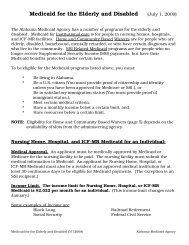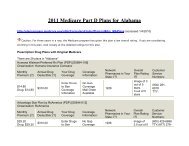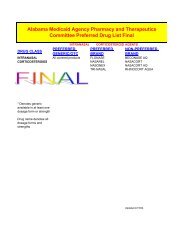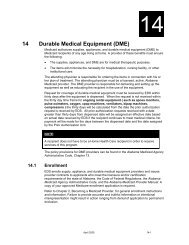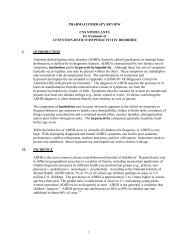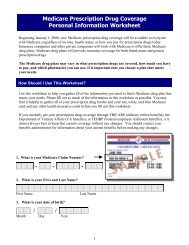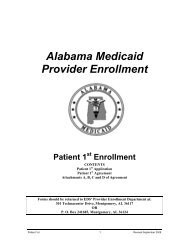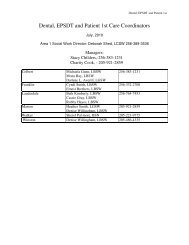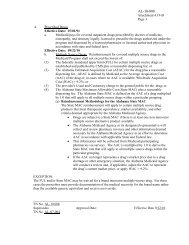Appendix A Well Child Check-Up (EPSDT)
Appendix A Well Child Check-Up (EPSDT)
Appendix A Well Child Check-Up (EPSDT)
Create successful ePaper yourself
Turn your PDF publications into a flip-book with our unique Google optimized e-Paper software.
<strong>Well</strong> <strong>Child</strong> <strong>Check</strong>-<strong>Up</strong><br />
Interpretation of Lead Toxicity Screening Results<br />
Interpretation of blood results and follow-up activities based on blood lead<br />
concentration are described below and has been adapted from Managing<br />
Elevated Blood Lead Levels Among Young <strong>Child</strong>ren: Recommendations from the<br />
Advisory Committee on <strong>Child</strong>hood Lead Poisoning Prevention.<br />
Capillary Sample<br />
Blood Lead<br />
Concentration (µg/dL)<br />
Comments<br />
< 10 Is not indicative of lead poisoning.<br />
Refer to Risk Questionnaire<br />
If low risk: perform a blood lead toxicity screening at 9-12 months and<br />
24 months of age<br />
If high risk: Retest in 3 months. If 2 nd test 70 Confirm with venous sample immediately.<br />
NOTE:<br />
All capillary results that are > 10μg/dL, should be confirmed with a venous<br />
blood lead test.<br />
Venous Sample<br />
Blood Lead<br />
Concentration<br />
Comments<br />




